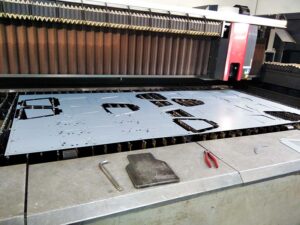
Introduction to welding
Welding usually refers to the welding of metals. It is a forming method by heating or pressurizing, or both at the same time, to make two separated objects produce atomic binding force and connect them into one. Classification: welding methods can be divided into three categories according to different heating degrees and process characteristics during welding.
(1) Fusion welding. The welding part of the workpiece is locally heated to the melting state to form a molten pool (usually filled with filler metal). After cooling and crystallization, the weld is formed, and the welded part is combined into an inseparable whole. Common fusion welding methods include gas welding, electric arc welding, electroslag welding, plasma arc welding, electron beam welding, laser welding, etc.
(2) Pressure welding. In the welding process, whether heated or not, pressure welding method is required. Common pressure welding includes resistance welding, friction welding, cold pressure welding, diffusion welding, explosion welding, etc.
(3) Brazing. After melting with filler metal (filler metal) whose melting point is lower than that of the metal to be welded, the joint gap is filled and connected by mutual diffusion with the metal to be welded. During the brazing process, the welded parts do not melt and generally have no plastic deformation.
QUICK LINKS: FAQ | Inside Corner Bracket | Stainless Marine Bracket | Sheet Metal Products | Sheet Metal Service | Corner Bracket for Cabinet | Corner Frame Bracket | Kiosk Enclosure Manufacturer |Kiosk Cabinet| Rack Rail | EV Charging Enclosure

